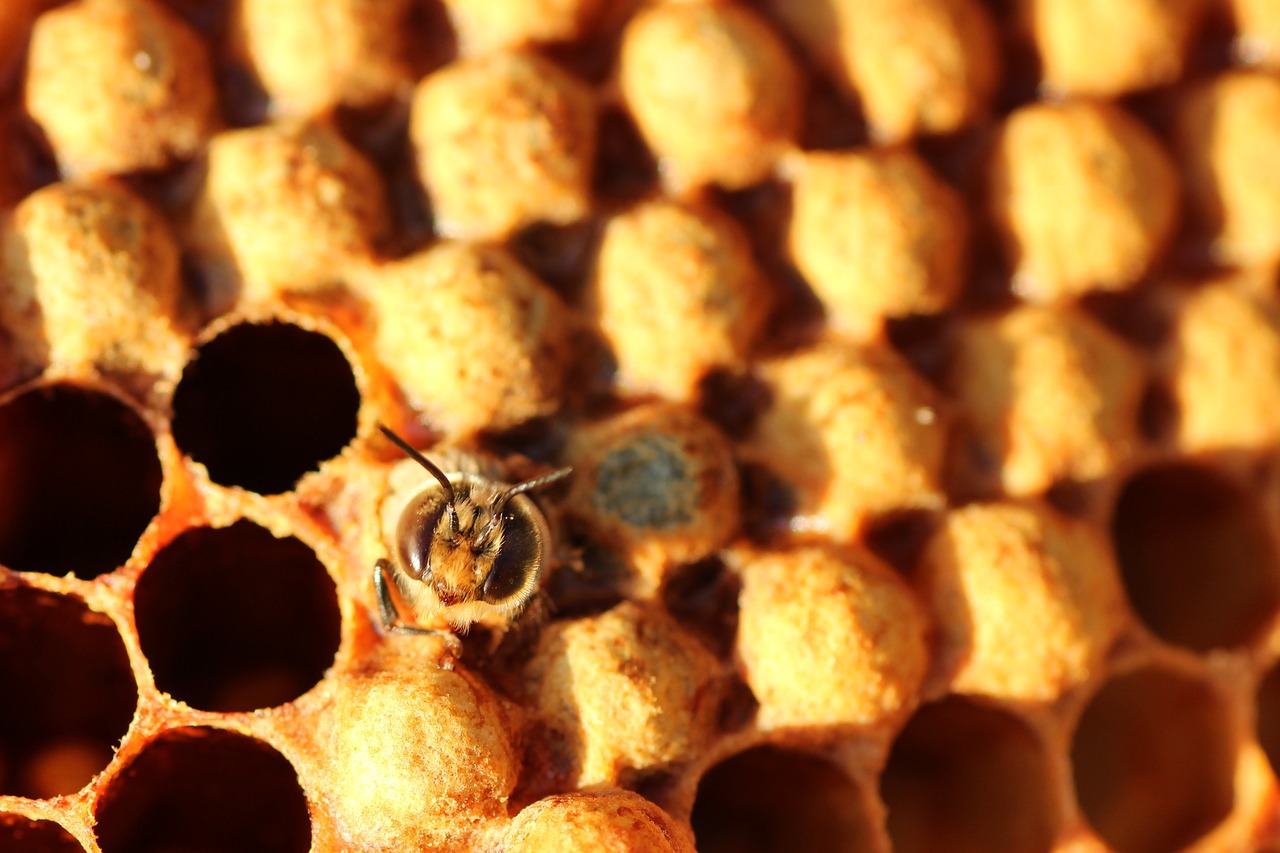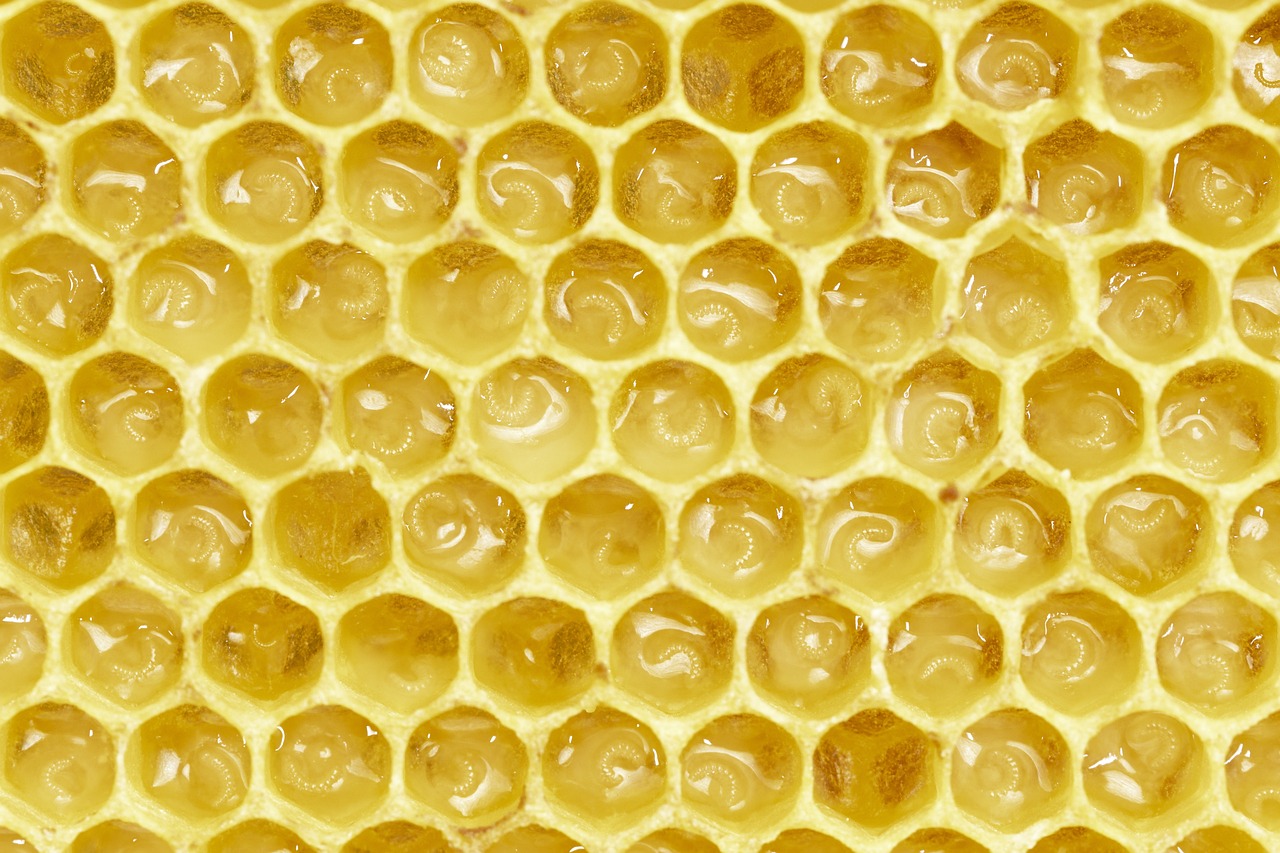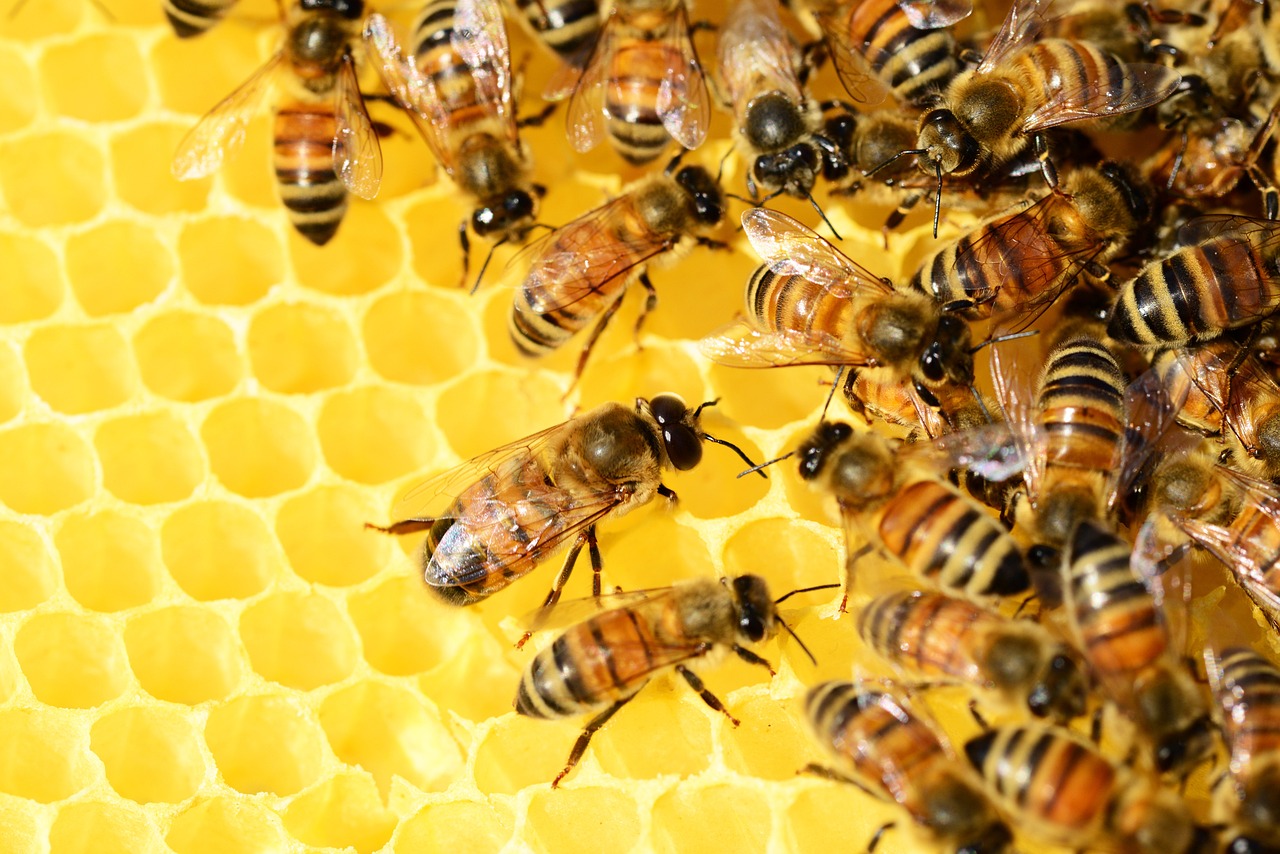What Is the Honey Bee Social Structure and Hierarchy in a Colony?
Unlike most insects, honey bees are social creatures. They form collaborative, organized colonies to keep their hive safe and thriving. The workings of a hive are incredibly intricate, handling everything from communication and work division to environmental regulation and defense.
This complex lifestyle makes these highly evolved insects into fascinating creatures. But how is their social structure organized within this complexity? Our guide will provide a complete overview.
Queen
Colonies can have tens of thousands of honey bees, but there’s only one queen bee. She also lives far longer than the others—four years to a worker bee’s six or so weeks. The queen is the most important member of the hive. Their main responsibility is reproduction. She lays all the eggs in the colony, and she’s the only one who can produce fertilized eggs. This is because, shortly after a new queen bee emerges from her cell, she goes on her mating flight.
By herself, she leaves the hive and flies a distance away to mate with drones from other colonies. A couple of days after the mating flight, the queen begins to lay eggs. She will continue reproducing fertilized and unfertilized eggs (creating worker bees and drones, respectively) for the next couple of years. That is, until she dies or becomes too old to lay.
The queen’s other major duty is to produce pheromones. These chemical substances earn certain reactions from the other honey bees. The queen bee uses them to unite the colony and keep the hive productive. For example, one of the main pheromones she produces is queen substance. This lets the rest of the colony know that she is alive, healthy, and productive.
When the bees can no longer sense the queen substance, that’s their signal to start making new queens. Other pheromones the queen produces can attract drones in her mating flight or dissuade the worker bees from trying to lay their own eggs.
| Queen Quirk: The queen bee’s most prolific egg-laying period is the first two to three years of her life. Monitoring her productivity helps prevent the colony's population decline. |
Workers
If you see a honey bee flying around, chances are it’s a worker bee. These bees make up the vast majority of the bee colony. Honey bee workers are all females. However, unlike the queen, they are not as sexually developed. Instead of reproducing, they do all the work in the hive. Worker bees are responsible for forming the hive cells, making honey and beeswax, taking care of the queen, and defending the hive.
A subset of the worker bees is nurse bees, who feed and take care of the brood. Other honey bee workers are field bees. They’re the ones who collect nectar, pollen, and other resources for the hive. The worker bees share these jobs throughout their life. They start by working in the hive before eventually maturing into forager bees.
Laying Workers
If a colony loses its queen bee and can’t replace her right away, some of the worker bees will begin to lay eggs. However, because these workers never went on a mating flight, they’ll only be able to lay unfertilized eggs. This results in new drones but no new workers, throwing off the balance of the colony. With no new populations to take care of the brood, make honey, and forage for resources, the hive quickly fails.
However, this unusual situation provides an opportunity for beekeepers to discern a hive in distress. A surplus of drones in honey bee colonies, coupled with a lack of fresh worker broods, often signals that worker bees have commenced laying eggs. Recognizing this shift can help instigate timely interventions, like introducing a new queen, to restore balance within the hive.
Drones

The final type of adult bee is the drone. These are the male honey bees in the hive. They’re larger than their female counterparts—though not as big as the queen. Drones don’t have stingers, pollen baskets, or wax glands. Their main responsibility is to fertilize another colony’s queen on her mating flight, and they die after mating.
While they don’t make any contributions to their own hive, they play an important role in spreading genetics throughout bee populations. The more drones a queen mates with, the greater the genetic diversity of her colony is and the more successful the hive will be. However, because they can drain resources, the worker bees will often push out any drones in the hive in preparation for winter.
Brood
The social structure of honey bees often revolves around the reproduction and care of new bees or the brood. The brood consists of young bees in three stages of development: eggs, larvae, and pupae. Nurse worker bees take care of the brood while they mature, feeding them and capping their cells during the larval stage.
Brood patterns are a good way to measure the health of honey bee colonies. When a queen is healthy and productive, she will lay eggs in a pattern, with few brood cells left empty. The capping on pupae cells should also be a uniform tan or brown color, not uneven or sunken into the cell. If a queen isn’t following this pattern while laying, she might be nearing the end of her productive years, or the colony might be facing disease or other issues.
Eggs

When the queen lays her eggs, she places one in each brood cell. She attaches the egg to the bottom of the cell. The egg stands upright at first but slowly begins to bend throughout the first few days of development. After three days, the egg will hatch as a grub, starting the larval stage.
Observing the egg-laying pattern and health can also offer valuable insights into a colony's well-being. For instance, a sudden drop in the number of eggs or their irregular arrangement might indicate an aging queen or potential disease outbreak, alerting beekeepers to potential issues.
Larvae
Healthy honey bee larvae are white, plump grubs. Nurse worker bees feed them throughout the larval stage, but what they eat and how long this stage lasts depends on what kind of honey bee they will become.
Future queen bees eat a special honey mixture called royal jelly that helps them grow larger and develop in a way that allows them to reproduce. Worker bees and drones eat a little bit of royal jelly, but their diet mostly consists of a honey and pollen mixture called bee bread. During this stage, the larvae also stretch out in their cells and spin their cocoon.
Pupae
At the end of the larval stage, worker bees cap the brood cell with beeswax, and the larvae begin to transform into adult bees. Healthy pupae are still white, plump, and grub (like at the beginning of this stage), but their color gradually changes as their bodies begin to take on their adult forms.
This process takes about one to two weeks, depending on what kind of honey bee it is. At the end of this stage, the new bees emerge from their cells as fully matured workers, drones, or queens. From here, the hive’s continuity depends on successful metamorphosis within these waxen nurseries. The hive members' critical role in safeguarding these transforming larvae demonstrates the collective nurturing instinct of a honey bee colony.
To better understand the transitions and differences between these critical developmental stages, let's view them side-by-side in the table below.
| Eggs | Larvae | Pupae | |
| Duration/Development Time | 3 Days | 4-10 Days | 7-14 Days |
| Feed | Laid by queen | Fed by nurse bees, diet varies by bee type | Not fed, developing into adult bees |
| Appearance | Tiny white specks | White plump grubs | Initially white, then darkening over time |
| Function | Initial stage of bee's lifecycle | Growth and development | Transformation into adult bees |
Nucleus Colony
Due to the various stages of life and the efficient division of labor, a hive is a complex yet incredibly successful system. This is why many beekeepers choose to start a new hive with a bee nuc instead of a regular honey bee package.
A nuc or nucleus bee colony is basically a smaller but fully functioning hive. When placed into a full-sized hive, the nuc is more likely to grow into a strong and healthy colony, making the process of establishing a new colony easier and more successful.
| Nuc Note: Opting for a nucleus colony, a mini-functioning hive, can ease the setup process for beginner beekeepers, offering a higher chance of establishing a successful, healthy hive. |
Decision-Making and Consensus
Honey bees exhibit remarkable democratic practices when it comes to fundamental hive decisions. A prime example can be seen when the existing hive becomes too crowded and a new location needs to be found. Scout bees venture out, exploring various potential sites and, upon return, “vote” for their chosen site by performing a waggle dance.
The decision-making process is not hurried, and each scout bee's opinion is taken into account. Over time, a consensus is reached based on the intensity and frequency of the dances for each site. This intricate process showcases how each bee, irrespective of its rank, contributes to important decisions that affect the entire colony's future.
Wrapping up the Honey Bee Hierarchy

The intricate social fabric within a honey bee colony underlines the depth of their evolution and complexity. Their hierarchical structure, built around a queen, drones, and countless worker bees, illustrates how every honey bee plays a pivotal role in the colony's function and survival.
The hive’s unique approach to labor division, decision-making, and the subtle yet profound chemical language of pheromones attests to their nuanced societal systems. Honey bees embody an incredible model of interspecies cooperation and shared responsibility, all while playing a significant role in our planet's ecosystem.

